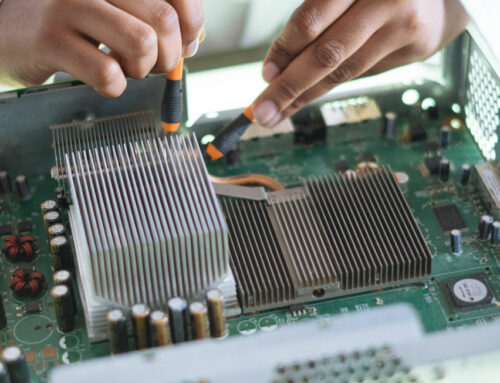With major wireless carriers announcing the launch of 5G later this year, you may be thinking it’s time to put your current network plans on hold and wait for this cutting-edge networking innovation.
5G networks are the latest generation in wireless technology (3G, 4G, LTE, etc.), touting faster speeds and more reliable connections. But, is it time for your enterprise to start planning for 5G?
When Will 5G Arrive?
Worldwide, 5G networks are anticipated to launch by 2020 and the development of 5G networks in the U.S. is underway. Verizon is expected to launch in several cities by the end of 2018. T-Mobile and Sprint have announced their 5G launch in early 2019. And AT&T claims it will have active mobile 5G networks in a dozen cities by the end of 2018.
But this doesn’t mean coverage will be available nationwide any time soon. It’s estimated that it may be 2021 or 2022 before 5G is available across the U.S. In the meantime, 5G will work alongside, rather than replace existing 3G and 4G networks.
Additionally, it’s expected that wireless carriers will initially focus on the consumer market to recoup launch costs and expand the reach of 5G before turning their attention to business customers.
What You Need to Know
5G will revolutionize wireless networks with the ability to support ten times the number of devices on current networks. Mobile users can expect 5G networks to operate significantly faster than they do today.
It’s expected that download speeds of 1GBps will be the average on this new and improved network, compared to an average of 12MBps that users experience on 4G LTE networks.
And with latency under a millisecond, 5G networks will feel instantly responsive. Especially important for the IoT, the new 5G network will lower power consumption to extend battery life for connected devices.
Proponents of 5G claim that it will transform businesses, and with reduced physical constraints tying employees to specific office locations, they may be right. Large and small businesses will see new opportunities in commercial operations with 5G. By enhancing communications, new services and improved service delivery and optimizing the Internet of Things (IoT), businesses will be more integrated, productive and robust. There are a few examples of how 5G may impact your enterprise.
RELATED POST:
Thinking Beyond Your Network
Fixed Wireless Access: This method of providing internet access uses wireless mobile network technology instead of fixed lines. By using Fixed Wireless Access (FWA) on 5G businesses will experience fast and reliable network service that’s on par with a fibre-based broadband network and provides even faster speeds than broadband currently does.
This increased speed and reliability will translate into increased productivity, allowing businesses to improve their operations, enhance customer communications, create new applications or increase automation.
Augmented Reality and Virtual Reality: Augmented and virtual reality (AR and VR) content has been lauded as the next wave in high-resolution video content and 5G will play a big part in that. 4G network standards curtail what is possible with AR and VR due to limitations in bandwidth, latency, and uniformity.
The increased network speeds of 5G will allow data-intensive applications providing this AR and VR content to run more smoothly and provide a better customer experience. By leveraging the power of 5G and reduced latency rates, industries like healthcare, retail, education and public or industrial safety can harness AR and VR for a variety of uses, including marketing experiences that are immersive and perceived as stories rather than ads.
Internet of Things (IoT): Today the IoT runs on a combination of wireless protocols, such as Bluetooth, LTE and Wi-Fi, and until the widespread deployment of 5G, they will likely remain on these networks. However, the IoT is growing and as these “smart” devices start to be more commonly used, current networks will be unable to keep up.
The promise of 5G for the IoT is the ability to handle machine-to-machine connections for a million devices in .38 square miles, compared to about 2,000 connected devices per .38 square miles on 4G.
With the variety of IoT devices running the gamut from appliances to light bulbs, thermostats to wearables, this kind of connectivity is key. 5G networks will help power the rise in IoT technology and provide the infrastructure to carry the massive amounts of data these devices consume and transmit.
What’s Best for Your Business?
It’s easy to see how 5G has the potential to change enterprise networking for productivity, so what’s the best approach for your business? Will you branch out into the world of IoT, or are you already there and waiting for the faster network to take you to the next level? Will you leverage lag free AR or VR to create an experiential marketing campaign to reach your customers? Or, will you leverage the speed and reliability of 5G to increase automation and improve productivity?
With nationwide 5G availability still years away, you have time to plan for the future of your enterprise. Consider the launch timelines in your area and how you use your current network. Putting together a comprehensive roadmap that includes wireless use cases and application performance requirements will help you understand how and when you’ll be ready to make the leap.




